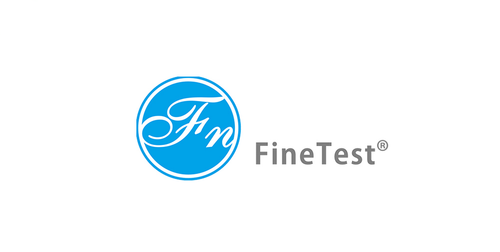Product Description
Human Interleukin 22 (IL-22) ELISA Kit | AE62991HU | Abebio
Species Reactivity: Human (Homo sapiens)
Abbreviation: IL22
Alternative Name: IL-21; IL-22; IL-D110; IL-TIF; IL21; ILTIF; MGC79382; MGC79384; TIFIL-23; TIFa; zcyto18; IL-10-related T-cell-derived inducible factor|interleukin 21
Application: ELISA
Range: 7.8-500 pg/mL
Sensitivity: 3.1 pg/mL
Intra-Assay: ≤3.6%
Inter-Assay: ≤6.6%
Recovery: 0, 92
Sample Type: Serum, Plasma, Other biological fluids
Detection Method: Sandwich
Analysis Method : Quantitive
Test Principale: This assay employs a two-site sandwich ELISA to quantitate IL22 in samples. An antibody specific for IL22 has been pre-coated onto a microplate. Standards and samples are pipetted into the wells and anyIL22 present is bound by the immobilized antibody. After removing any unbound substances, a biotin-conjugated antibody specific for IL22 is added to the wells. After washing, Streptavidin conjugated Horseradish Peroxidase (HRP) is added to the wells. Following a wash to remove any unbound avidin-enzyme reagent, a substrate solution is added to the wells and color develops in proportion to the amount of IL22 bound in the initial step. The color development is stopped and the intensity of the color is measured.
Product Overview: IL-22, a class of potent mediators of cellular inflammatory responses. It shares us of IL-10R2 in cell signaling with other members of this family, IL-10, IL-26, IL-28, IL-29. IL-22 is produced by activated DC and T cells and initiates innate immune responses against bacterial pathogens especially in epithelial cells such as respiratory and gut epithelial cells.IL-22 along with IL-17 is rapidly produced by splenic LTi-like cells and can be also produced by Th17 cells and likely plays a role in the coordinated response of both adaptive and innate immune systems.IL-22 biological activity is initiated by binding to a cell-surface complex composed of IL-22R1 and IL-10R2 receptor chains and further regulated by interactions with a soluble binding protein, IL-22BP, which shares sequence similarity with an extracellular region of IL-22R1.
Stability: The stability of ELISA kit is determined by the loss rate of activity. The loss rate of this kit is less than 5% within the expiration date under appropriate storage condition. The loss rate was determined by accelerated thermal degradation test. Keep the kit at 37°C for 4 and 7 days, and compare O.D.values of the kit kept at 37°C with that of at recommended temperature. (referring from China Biological Products Standard, which was calculated by the Arrhenius equation. For ELISA kit, 4 days storage at 37°C can be considered as 6 months at 2 - 8°C, which means 7 days at 37°C equaling 12 months at 2 - 8°C) .
 Euro
Euro
 USD
USD
 British Pound
British Pound
 NULL
NULL








